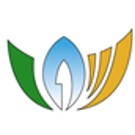Prohibited Substances for Use in Food in Macao
‘Prohibited Substances in Food’ refer to any non-food substance added to food during the food production and operation processes which endanger human health. The majority of significant food safety incidents that occurred on a global scale in recent years have been caused by the addition of such non-food substances or the use of prohibited drugs in animal husbandry and agriculture. As these substances pose significant hazards to health and threaten insidiously to human health and safety, the food safety incidents caused can induce serious impacts.
Why are these substances prohibited from the use in food?
1. Malachite green
It is a type of synthetic organic compound used as an industrial dye and bactericide which has the function of treating fish diseases. When malachite green is used in fish cultivation, it penetrates into its body tissues and produces metabolites that remain in fish body for a long time. It is a potential carcinogenic chemical and may lead to developmental hazards.
2. Nitrofurans
They are a group of chemical substances with wide antibacterial property which has the function of killing pathogens like fungi and protozoa. They were once commonly used in the livestock, poultry industry and aquaculture. So far, there is evidence suggesting that nitrofurans may cause cancer in animals, pathologic changes in the haematological system, and damages to the eyes, liver and kidneys.
Extensive Reading: What Are Nitrofurans?
3. Diethylstilboestrol
It is a synthetic oestrogen that was used in poultry farming and added to feed for accelerating animals’ growth. The substance is usually residual in the organs or muscle tissues of food animals, and has already classified as carcinogenic to humans (Group 1) by the International Agency for Research on Cancer (IARC).
4. Chloramphenicol
It is a broad-spectrum antibiotic that was widely used against infectious diseases of meat animals and aquatic products due to inexpensive. Studies have revealed that intake of chloramphenicol over extended periods of time can cause antibiotic resistance to certain bacteria and serious adverse effects on the hematopoietic system, inhibiting the hematopoietic function of bone marrow.
5. Melamine
It is an industrial chemical that was adulterated to dairy products to cause a false increase in the protein content. Studies have indicated that excessive intake of melamine causes urinary stones in animals.
6. Sudan dyes
Sudan dyes are a group of industrial dyes added to food for enhancing and maintaining its colour. It has been found that illegally adding to poultry feed makes the egg yolk in a bright red. Studies have revealed that consumption of Sudan dyes over extended periods of time may cause cancer and genetic hazards in animals.
7. Borax or boric acid
They are boron-containing compounds added to food for extending its shelf life and giving a chewy and crunchy texture. It has been found in some Chinese food like glutinous rice dumplings and shrimp dumplings. Studies have indicated that short-term intake of excessive boric acid may cause vomiting and diarrhoea symptoms. In severe cases, it damages the stomach, bowels, liver and kidneys.
How can the laws, regulations and notification mechanism ensure the safety of food supply to Macao?
As stipulated by the “Food Safety Law” and Administrative Regulation No. 6/2014 “List of Prohibited Substances for Use in Food” which was amended by Administrative Regulation No. 3/2016, these prohibit many substances for use in food, including malachite green, nitrofurans, diethylstilbestrol, chloramphenicol, melamine, Sudan dyes, borax or boric acid. The substances must not be detected in the food produced, supplied and sold in Macao. Any violation is punishable by law.
The Municipal Affairs Bureau (IAM) is constantly monitoring the safety of food in Macao at the import and market levels. In accordance with existing laws, regulations and import regime, all imported fresh and live food upon arrival in Macao must go through compulsory inspection and quarantine before entering into the market. The food are tested for prohibited substances like malachite green, chloramphenicol and nitrofurans. If any suspected food is detected at the entry level, IAM will immediately notify the relevant authority of the source country via the cooperation and coordination mechanisms. The import of the implicated food will be temporarily suspended until the risk is removed. At the market level, IAM conducts routine food surveillance, targeted food surveillance and food incident surveillance system to oversee the safety of food available on the local market. Moreover, meat and processed meat products are tested for veterinary drug residues and food additives on a regular basis. Upon detecting any risk factor related to certain food products, immediate action will be taken to safeguard food safety in Macao.
IAM advises consumers to have a diverse and balanced diet, and avoid consuming a single food type excessively so as to reduce health risks.
025/DIR/DSA/2019
Updated in May 2022








